Question:
For the folded-active-cascode op amp in Fig. 6.30, choose the device sizes to give a peak-peak output swing of at least 2.5 V. Use the 0.4 μm CMOS model parameters in Table 2.4 except let γ = 0.25 V
½and X
d= 0 for all transistors and V
t0= 0.7 V and ˆ’0.7 V for n-channel and p-channel transistors, respectively. Assume the drawn channel length is L = 1μm is used for all transistors to simplify the design. With I
BIAS= 25 μA, the bias currents should be |I
D5| = I
D11I
D12 = I
D25= |I
D35|=200 μA. Assume V
DD = V
SS=1.65 V and that the matching is perfect. When the dc input voltage V
I=0, assume that all transistors except M
106and M
114operate in the active region with equal overdrive magnitudes. To make the gain insensitive to small shifts in the operating point, design the circuit so that the magnitude of the drain-source voltage for each transistor operating in the active region exceeds the magnitude of its over-drive by at least 100 mV. Ignore the body effect in the hand calculations. Use SPICE to verify your design, to choose the widths of M
106and M
114, and to deter-mine the gain. Also, use SPICE to determine the gain if V
t0= 0.6V for n-channel transistors andV
t0= ˆ’0.8 V for p-channel transistors, as given in Table 2.4. Explain the resulting change in the op-amp again.
Figure 6.30
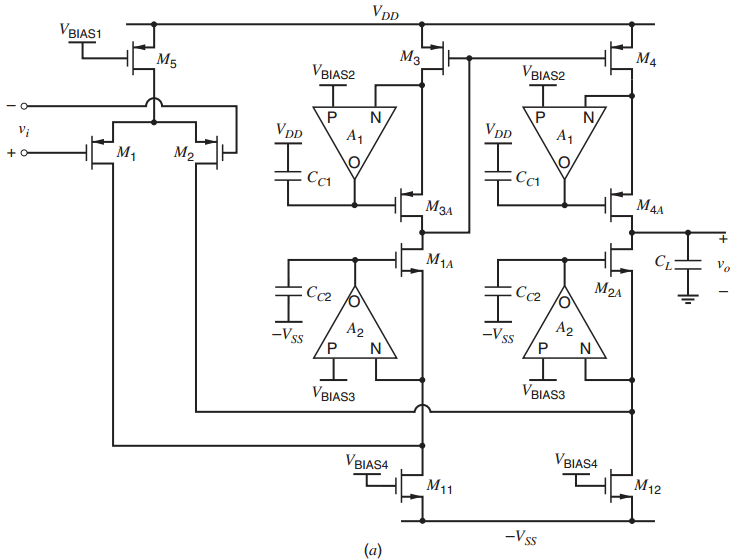
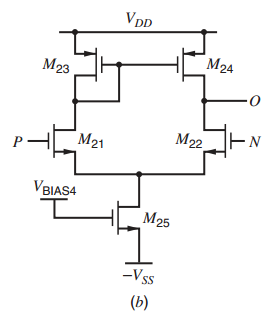
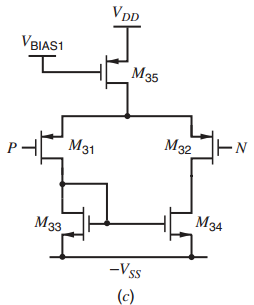
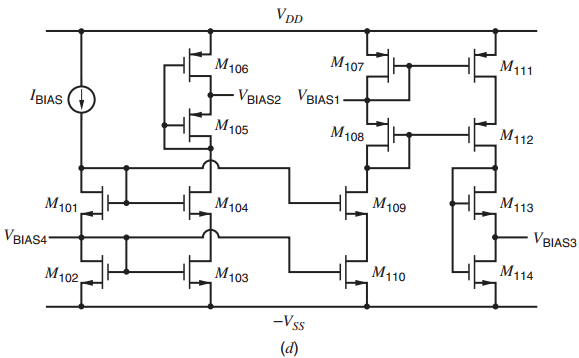
Table 2.4
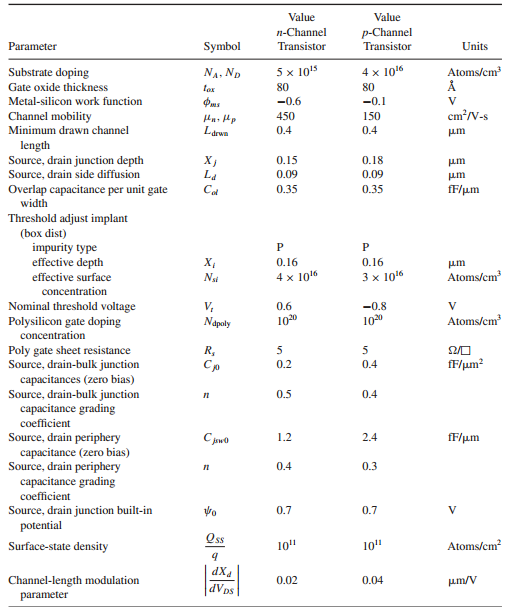
Transcribed Image Text:
VDD M4 VBIAS1 Mз VBIAS2 M5 VBIAS2 N, A1 P VDp VDD A1 I. M2 M1 Cc1 MAA Мал M1A М2л Cc2 Cc2 A2 -Vss A2 -Vss VBIAS3 VBIAS3 VBIAS4 VBIAS4 M12 M11 -Vss (a) VDD M24 M23 M21 M22 EN P УBIASA M25 -Vss (Ь)












